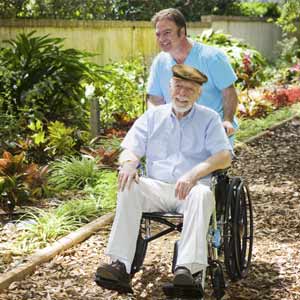If you are looking for senior care for an elderly parent or grandparent, one of the first things that you probably did, back at the beginning of your search, is to compare costs of the different types of care out there. You’ve probably already noticed that some types of care are way more expensive than other types of care.
Two of the most cost effective types of care that you will find offered are in-home care and assisted living. They are very similar in price, and depending on where you look at what types of services you want, you may find that one is slightly more expensive than the other, or vice versa. When two things are so similar in price and you are not quite sure what you are looking for–or even what you really need out of care–it can present a dilemma of choice. Here, we will look at the basics of each and help simplify the process for you a little bit.
In-Home Care
In-home care takes place within the home. It can be administered by a professional or by anyone else who wants to take on this responsibility. That’s the biggest problem when it comes to finding an in-home caregiver. There’s the potential that someone unqualified for the position would apply for the job, putting your parent in danger. In order to avoid this, we recommend only going through a professional care service. This way you know that all of the caregivers within that service are fully trained and have had the necessary background checks to be placed in a position of this level of responsibility. Going through a service also helps keep costs down.
With in-home care, care can be as strenuous or as laid back as desired. You can have a caregiver there around the clock, or a few hours per week. You can also use a respite caregiver where care is given only once in a while. It is a very customizable form of senior care.
Assisted Living
Assisted living takes place in a care home. There can be just a few residents here, or there may be many, depending on the size of the home and the staff. Assisted living facilities offer much of the same benefits as in-home care, but in a group setting. This comes with some downsides, such as there may not be a one-to-one ratio of staff to residents, but there are also upsides. For example, in in-home care, the person receiving care often doesn’t have any peers to interact with. Living in an assisted living facility takes care of this issue.
Which one is best?
Figuring out which one is best for a loved one is tough, but looking at the descriptions of each can help. Also, be sure to ask what they want for their care. Many people want to stay in their home. It’s easier and less disruptive to their lives. Others want the group atmosphere and want a change of scenery with more social interaction. If costs are similar, then it really comes down to which one is best for their physical and emotional needs.



Leave a Reply